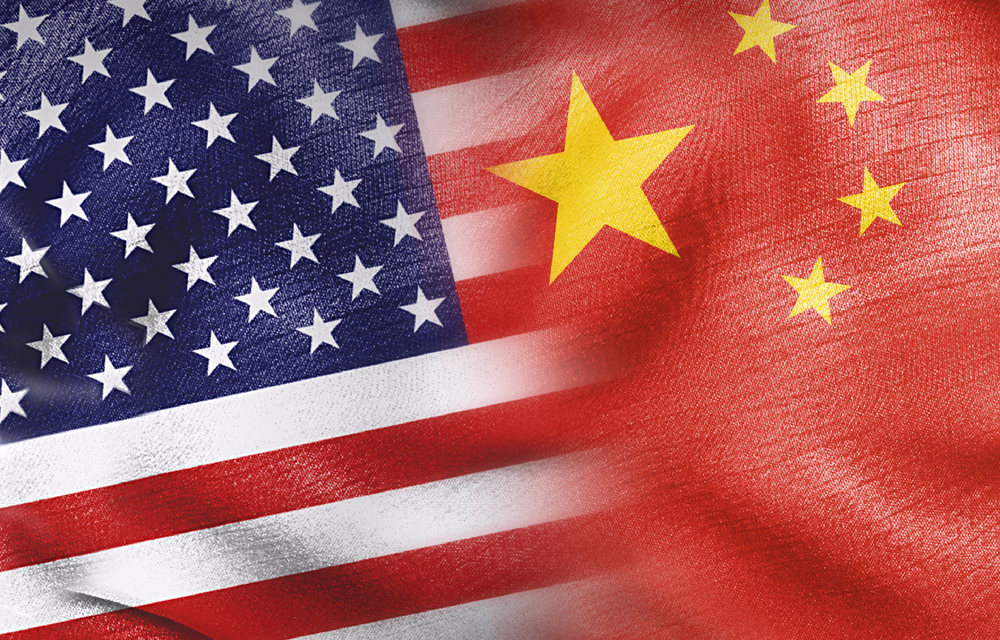To Restrict, or Not to Restrict, That Is the Quantum Question

Published by The Lawfare Institute
in Cooperation With

Innovation power—the ability to invent, scale, and adapt emerging technologies—will determine which country prevails in the great power competition of the 21st century. Export controls accordingly assume a central position in the U.S. foreign policy toolkit, carrying the ability to significantly impact an adversary’s innovation potential. In October 2022, the Biden administration introduced semiconductor, artificial intelligence, and supercomputing-related export controls on China and has since hinted that similar restrictions on other technologies, including quantum information science, may soon follow.
U.S. policymakers are right to identify quantum information science as a critical technology area ripe for restriction, but introducing export controls now is likely to cause more harm than good.
Establishing U.S. leadership in quantum information science, which includes the subfields of quantum computing, quantum sensing, and quantum communications, ranks among the Biden administration’s highest national security priorities. Quantum technologies promise to dramatically increase computing power and speed, enabling machines to solve problems beyond the capacity of current-generation computers. They are also inherently dual use, meaning they can be applied to both military and civilian contexts.
The potential strategic advantages of quantum technologies are numerous and significant. Quantum-enabled countries could crack an adversary’s encryption methods, build unbreakable communications networks, and develop the world’s most precise sensors. The first country to operationalize quantum technologies will gain the ability to threaten adversaries’ corporate, military, and government infrastructure more quickly than an adversary can establish effective defenses. Beyond the direct military applications, quantum technologies could further deliver significant economic advantages in a range of industries, from aerospace and defense to pharmaceuticals and automotive.
Given its strategic importance, quantum technology has become a focal point in the ongoing competition between Beijing and Washington. In line with the “protect” pillar of the Biden administration’s two-pronged technology strategy, U.S. policymakers have already implemented a number of narrowly scoped export controls on quantum technology in an effort to safeguard critical U.S. technological advances.
Quantum sensing is the only general category of quantum information science with U.S. export controls in place. Unlike other quantum technology categories, the potential defense applications of quantum sensors are relatively clear and achievable in the near- to mid-term. Within the next five years, for example, China could leverage quantum sensors to enhance its counter-stealth, counter-submarine, image detection, and position, navigation, and timing (PNT) capabilities. China could additionally build quantum-enabled high-precision gravimeters, enhancing its ability to identify camouflaged objects, as well as deposits of oil and minerals.
Other existing U.S. quantum technology controls target specific end users, rather than general technology categories. In November 2021 and March 2022, the U.S. Department of Commerce added three Chinese and one Russian quantum technology organization to its Entity List for attempting to acquire U.S.-origin quantum technologies for military purposes. The organizations’ inclusion on the list subjects them to supplemental license requirements for the export or transfer of certain quantum products.
The war in Ukraine has led to an expansion of quantum technology restrictions. In September 2022, the U.S. Office of Foreign Assets Control (OFAC) prohibited Russian persons from receiving various quantum computing and cryogenic refrigeration services, including infrastructure, web hosting, data processing, computer systems integration design, and repair services. The ban does not apply to certain U.S.-owned or controlled entities located in Russia, nor to services provided in connection with the termination or divestiture of entities located in Russia.
In addition, the OFAC issued a separate determination that gives it the authority to designate any current or former operative in Russia’s quantum computing sector as a Specially Designated National. The assets of designated individuals or entities are frozen, and U.S. persons are generally prohibited from conducting any business or financial transactions with them.
While existing controls on quantum technology are relatively haphazard and disconnected, the White House is currently exploring a more unified and comprehensive round of controls intended specifically to blunt China’s access to U.S. quantum computing equipment. When asked at a public event in October 2022 whether the Biden administration would subject quantum technology to additional export controls, Under Secretary of Commerce for Industry and Security Alan F. Estevez stated, “If I were a betting person, I’d put down money on that.”
Forthcoming regulations on quantum technology could be structured in a variety of ways. U.S. policymakers could choose to expand existing controls targeting explicit end users and use cases, or they could opt for novel controls focused on quantum technology itself. I discuss these approaches in detail below.
U.S. policymakers could restrict the flow of quantum technologies to a broader base of end users, such as China’s national laboratories, companies within the Chinese military’s supply chain, or companies accused of human rights abuses. This piecemeal approach mirrors existing controls on Russian and Chinese entities. It is a time- and resource-intensive endeavor, and leaves gaps that targeted entities can exploit to ultimately receive restricted items. Entity List designations, for example, do not capture subsidiaries unless such subsidiaries are specifically named as well. SenseTime, China’s largest facial recognition startup, has leveraged this loophole to skirt the Biden administration’s Oct. 7 export controls. Despite its inclusion on the Entity List, SenseTime reportedly bought advanced U.S. chips directly through its own subsidiaries in early 2023.
The effectiveness of the end user approach also hinges on multilateral support and cooperation. Unilateral U.S. export controls—measures taken without the approval or cooperation of other countries—could be effective in technology areas in which the U.S. maintains a decisive edge and unique capabilities. But multiple countries, including Singapore, Germany, the Netherlands, and Japan, are competitive in quantum technology. Unilateral U.S. controls thus afford foreign firms commercial incentives to backfill restricted technology to targeted entities.
Future controls could also focus on preventing adversaries’ application of quantum technologies to certain use cases, resembling existing controls on defense-relevant quantum sensors. U.S. policymakers might target quantum key distribution networks, which hold the potential to improve China’s information security and multi-domain communications system. They may also take aim at quantum computers designed specifically to model nuclear materials or to augment China’s nuclear command-and-control infrastructure.
All of this, however, is easier said than done. It is impossible to predict which quantum technologies will have immediate defense applications, and it is difficult to distinguish peaceful applications of quantum from military ones. This approach thus carries high intelligence requirements and demands processes that can quickly adapt to unexpected developments.
U.S. policymakers might alternatively pursue a new approach and target quantum technology itself. Policymakers could restrict entire integrated quantum systems, like functional quantum computers or quantum communications satellites, and the components required to build them. But a systems-level approach is currently difficult to impose. Few scalable quantum systems exist, and the technical benchmarks for characterizing their performance are still unfolding. China boasts that it possesses a 24-qubit quantum computer, for example, but quantum computers will likely require up to 1 million qubits to produce any meaningful real-world applications. Because existing quantum technologies remain at a low level of readiness, systems-level controls are not particularly necessary or impactful.
Narrower controls under a technology-centric framework could regulate specific quantum hardware and components. Similar to the United States’ recent export controls on graphics processing units, U.S. policymakers could restrict China’s access to technologies that facilitate the refinement of qubit capacity, a necessary step toward the development of scalable quantum computers. Examples include quantum chips of a certain level of output or error correction rate, or specific types of processors that spatially separate qubits. Other potentially targetable assets include helium dilution refrigerators, cryogenic ion trap packages, and magneto-optical traps.
The challenge with a components-oriented approach is that there is currently no single supply chain for quantum, and the technology chokepoints are unclear. Quantum developers are pursuing at least 12 quantum computing modalities in parallel, each dependent on different critical components with very little overlap. For example, some modalities—like superconducting qubits—require helium dilution refrigerators to function. Others—like trapped-ion qubits—instead rely on high-quality lasers and isotopically pure samples of various elements. Thus, the impact of blocking China’s access to helium dilution refrigerators could be detrimental to its quantum development or completely irrelevant depending on which quantum computing modality prevails.
In short, each of the potential export control frameworks carry significant pitfalls and are unlikely to be effective in protecting the U.S.’s strategic edge at this stage of development. Despite valid concerns about China’s activity in the quantum sector, it is too early for export controls. The future trajectory of quantum technology is highly uncertain, and premature restriction carries more risk than reward.
Quantum information science is a field of international collaboration, and much of the top technical talent resides outside the United States. Export controls could limit the exchange of ideas, block U.S. scientists from accessing promising research and early-stage prototypes, and stifle the scientific advancement of quantum technology before it demonstrates any significant commercial benefit. Ill-timed export controls could stymie progress on a range of beneficial quantum computing applications, from drug design and discovery to financial fraud detection and port logistics optimization.
Export controls could also adversely affect the U.S. quantum industry. Many domestic quantum companies endured a sharp increase in interest rates in 2022 and lack clear revenue streams. Export controls could further diminish the already fragile financial health of the U.S. quantum startup environment, directly hindering America’s potential for innovation in the quantum sector.
Even export controls that specifically target China could prove counterproductive. China and the United States are each other’s top collaborators on quantum research. U.S. and Chinese-affiliated scientists co-authored several highly cited quantum publications in 2022. China also holds the highest number of patents across the full spectrum of quantum technology and currently leads in the development of quantum communications. Continued collaboration presents serious technology leakage, industrial espionage, and intellectual property risks that must be actively policed. But reducing cooperation now risks impeding U.S. innovation and losing visibility into China’s research efforts.
U.S. outbound investment mechanisms may be better suited to address current challenges. Almost all quantum technology research and development in China is state controlled, but the country’s opaque private quantum technology ecosystem is growing slowly and appears to attract some U.S. investment. Screening tools, including the establishment of a mandatory notification regime for American investments in China’s quantum technology sector, could offer policymakers a means to track the exchange of technology and expertise and monitor China’s progress in the field.
Although export controls are not an immediately viable option, U.S. policymakers can take several steps to prepare for a future in which trade restrictions become more pertinent.
First, the Biden administration should clearly define its goals in quantum information science, which will inform the types of export controls it leverages down the road. The White House should consult with industry partners to determine which quantum technology areas carry the greatest economic potential—and consider whether leading across all quantum technology subsets is necessary to ensure U.S. national security. The goal-setting process will help direct U.S. research efforts, streamline resourcing, and identify areas ripe for future restriction. At this stage of development, a prudent guiding goal for quantum information science may involve ensuring U.S. influence over, and access to, every key part of the emerging quantum technology supply chain.
Second, the Biden administration should direct an organization to conduct quantum supply chain mapping on a continuous basis and resource it appropriately. The Quantum Economic Development Consortium and The Quantum Insider are well positioned to assume this responsibility. Many quantum startups lack the capacity to monitor supply chains themselves. White House-directed supply chain mapping can help mitigate the risk of dependence on competitor nations for critical quantum components and identify key bottlenecks as quantum technologies mature.
The Biden administration should also consider what level of supply chain dependence on allies and partners is acceptable for the United States. A completely domestic U.S. supply chain is prohibitively expensive and unrealistic given the number of potentially important components in play. The administration should leverage the Defense Production Act, as well as the Small Business Innovation Research and Small Business Technology Transfer programs, to boost domestic capacity for the production of quantum components that are deemed too sensitive to reside predominantly outside the United States. It should simultaneously develop an international forum to coordinate quantum technology supply chains with other leading quantum countries, including Australia, Canada, Finland, the Netherlands, Japan, and Israel.
Finally, U.S. policymakers need timely and accurate information about adversaries’ capabilities and intentions in order to determine when export controls on quantum technologies become necessary. They must therefore appropriately resource the intelligence community and the Department of Commerce to meet the quantum technology challenge.
U.S. government analysts working on quantum information science should develop metrics to assess the utility of export controls as the technology develops. The emergence of joint ventures between U.S. and Chinese state-linked quantum startups, for instance, might elevate the risks associated with open and collaborative research processes to an unacceptable level, introducing the need for greater oversight and regulation. Policymakers may also consider implementing export controls on quantum technologies once the U.S. secures a definitive lead over foreign competitors. Other useful metrics might illuminate China’s efforts to commercialize quantum technologies, control the quantum market, or integrate quantum technologies into its national defense infrastructure.
Export controls are an increasingly useful tool to prevent adversaries’ acquisition of sensitive technology and advance U.S. security and economic interests. But they are not a silver bullet solution to U.S.-China technology competition and can even be counterproductive. Premature export controls could impede innovation and handicap U.S. companies. Export controls on quantum technologies may be necessary in the future but should serve as one component of a broader U.S. technology strategy, rather than an end in and of themselves.
Editor's note: This piece has been updated with additional links to research that had not been previously cited.




